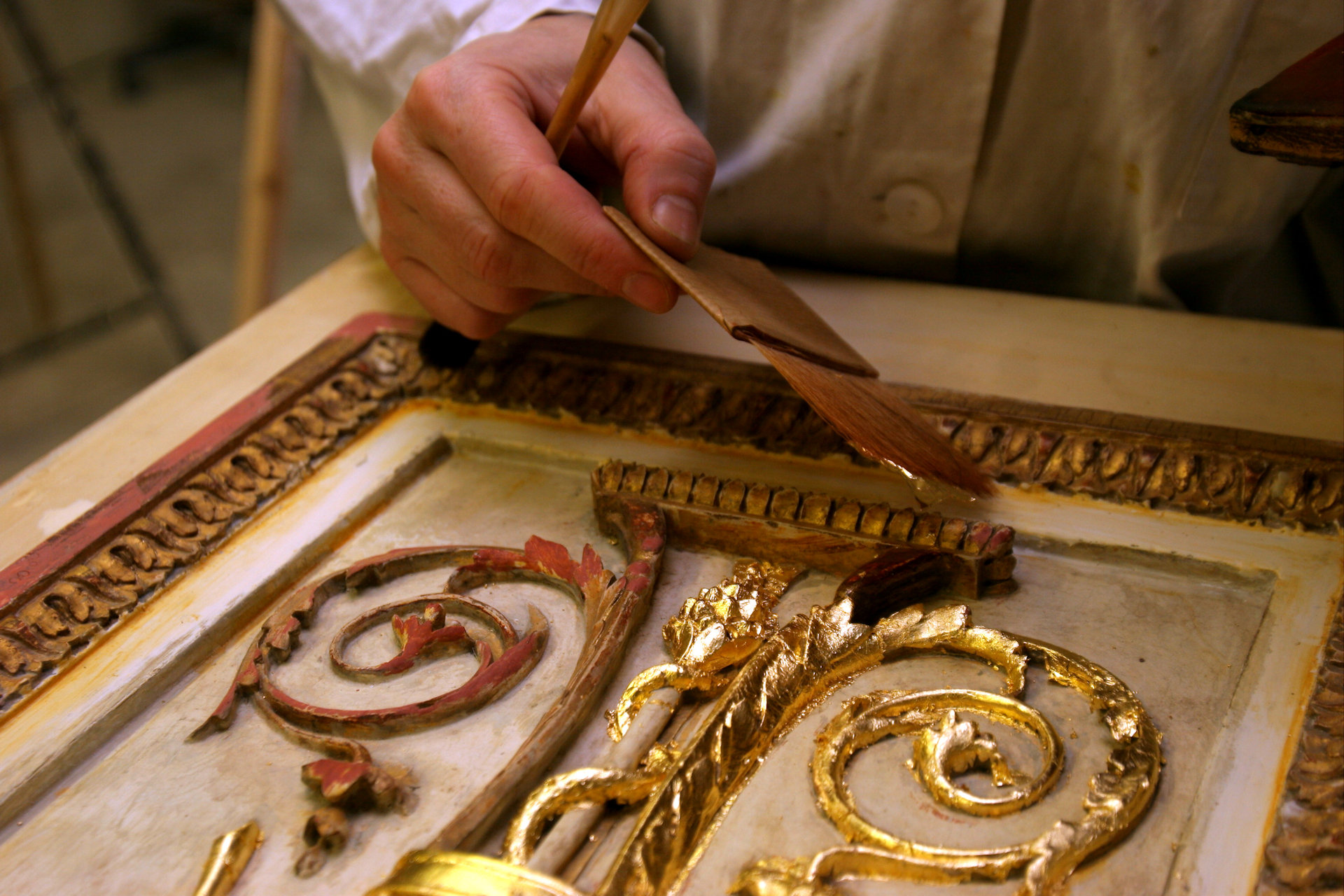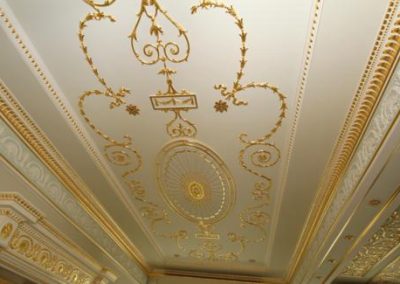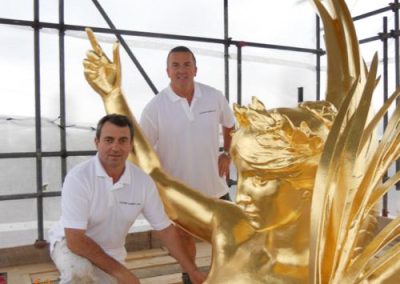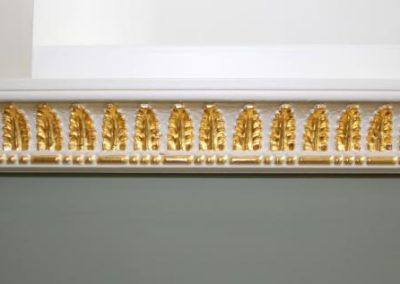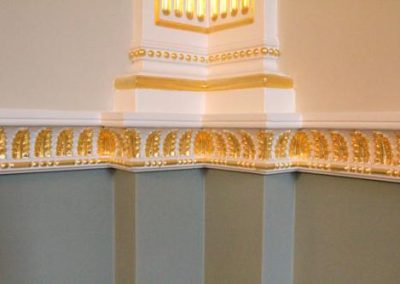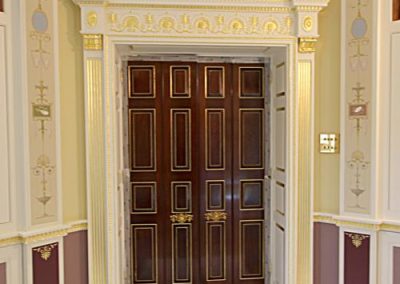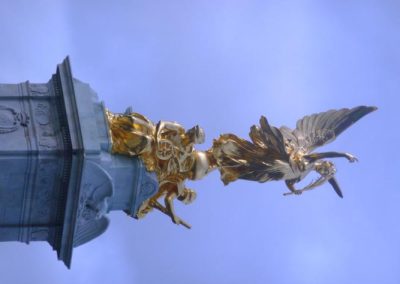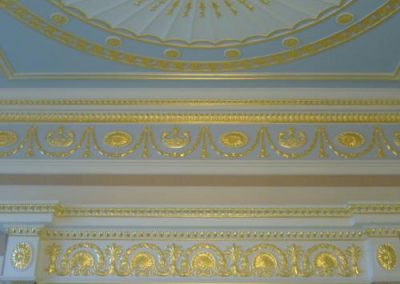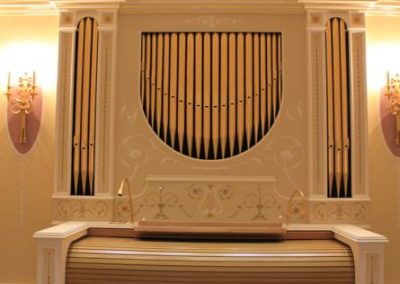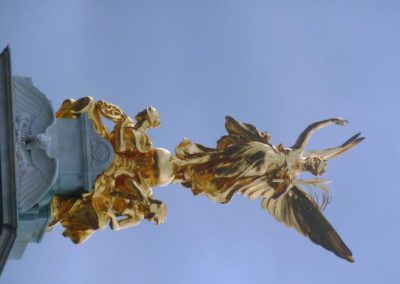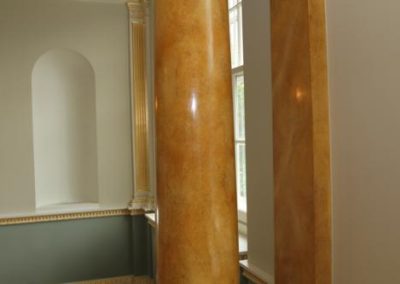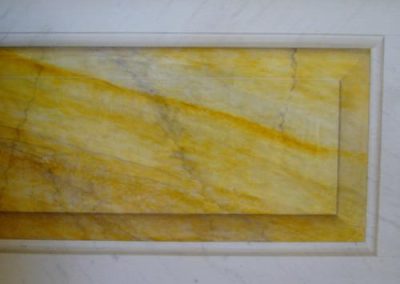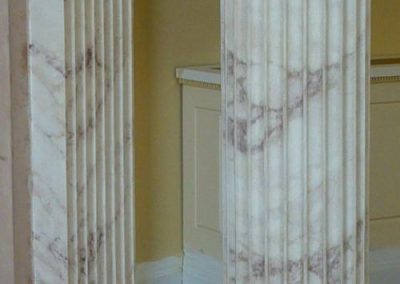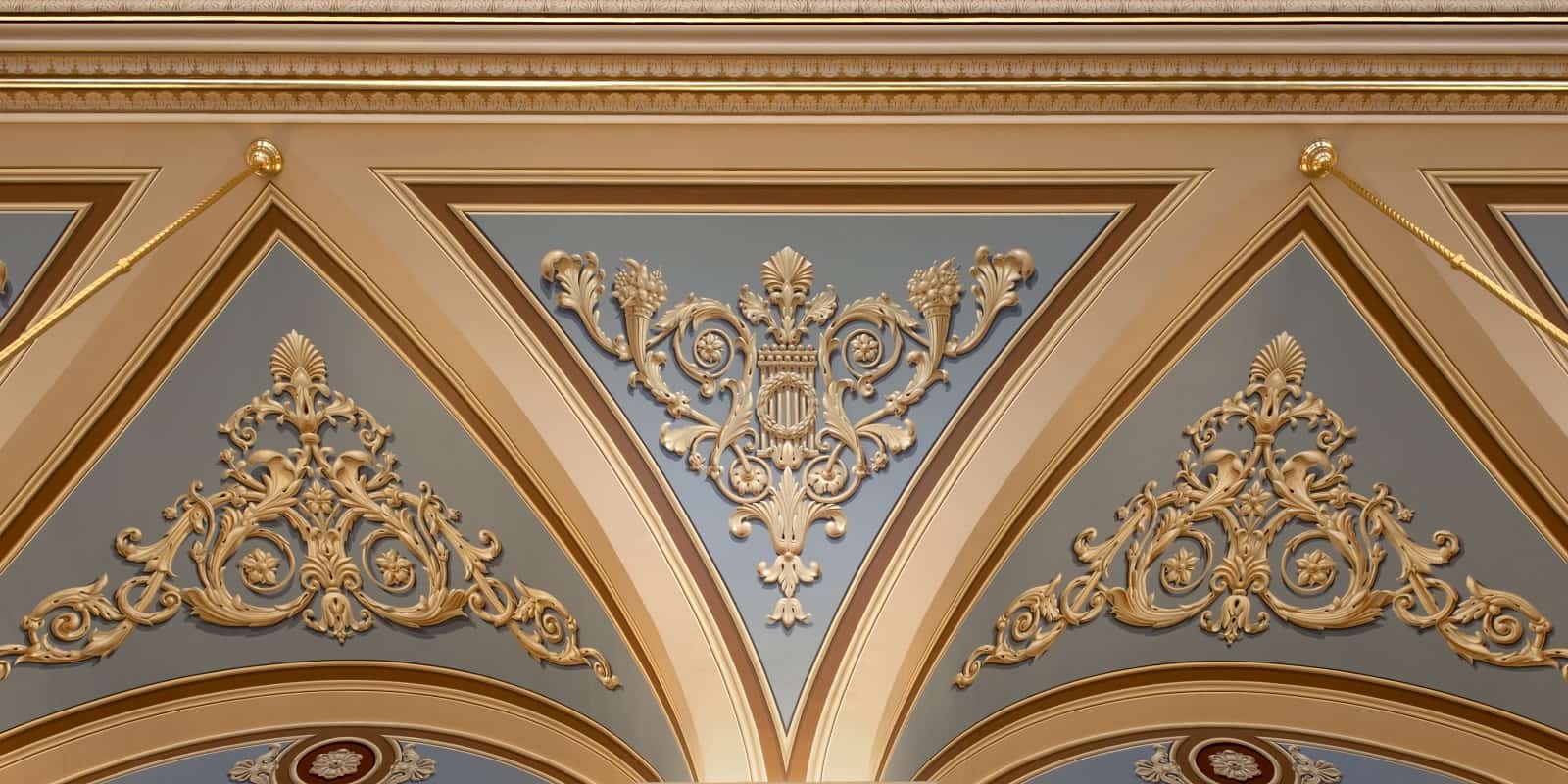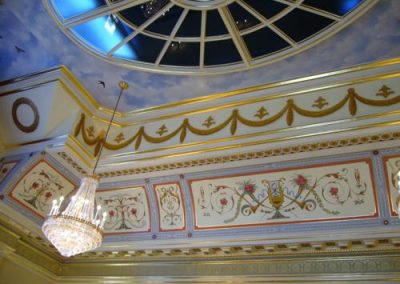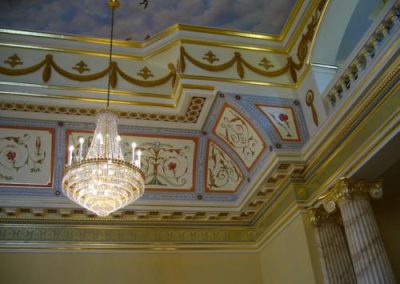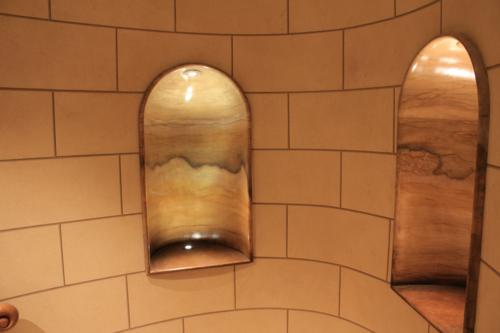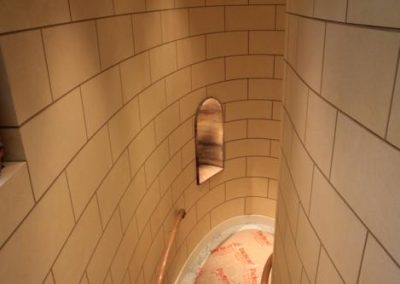Specialist Effects
Gilding
Gold leaf was first produced in ancient Egypt and Mesapotamia and used to decorate Funerary masks, Sarcophagi, furniture and musical instruments. The process of beating gold to make Gold leaf has changed little in 5000 years while gilding itself is ostensibly the same. Our craftsmen keep alive an ancient and venerable tradition. Gold leaf is generally applied by one of two processes: Oil Gilding: For exterior work such as railings, weather vanes, clocks and monuments oil-gilding is durable and weather resistant. In Britain, oil-gilding is also used for interior decoration of plasterwork and carved wooden elements such as cornices and architraves. Oil size can be applied to almost any non-porous surface after which it is normally left for 24-48hrs before the gold leaf is applied. ‘Skewings’ or loose gold is removed with a soft brush before the whole surface is polished with cotton wool and hot water. Water-Gilding: Furniture and frames are traditionally water-gilt. This process is far more complex and labour-intensive than oil-gilding but the results can be sublime. The (mostly wood) surface is prepared with up to 10 layers of Gesso (whiting & rabbit skin glue) to fill the grain and create a smooth surface not unlike porcelain. After this several layers of Bole.
Marbling
Marbling, or Faux Marbre is the art of imitating marble using paint glazes and washes; a technique popular since at least Roman times. There are a number of advantages to marbling. Firstly, it is and has always been, a much less expensive alternative to real marble. Secondly, it’s versatility means that the painter can match precisely, where necessary, existing marble or adjust his colouring to compliment a particular decorative scheme. Finally, many beautiful marbles such as Broccatello, Breccia Dorata and Giallo di Siena, were exhausted in antiquity, so can therefore be brought back to life by the skilled craftsman.
Stencilling
Stencilling is possibly the oldest paint technique known to man. Paleolithic examples can be found in cave paintings in France, and Aboriginal rock paintings in Australia. It is a simple technique used to produce delicate, polychromatic and gilded decoration. It was widely used in mediaeval church decoration but was taken to exquisite levels of colour and complexity during the Gothic Revival of the late 19th C. Clough Harris has considerable experience in the restoration of stencilled decoration from this period and is often called upon to recreate ‘lost’ schemes. Examples of their work can be found in the Palace of Westminster and the National Gallery.
Tromp Loeil
Trompe l’oeil means simply to ‘deceive the eye’. Panels, mouldings and architectural elements are painted, often in monochrome, onto flat walls and ceilings, to create the illusion of rich plaster relief. Elaborate schemes can be rendered to incorporate vistas, real or imaginary, through open doors, windows or latticed ceilings, or from ballustraded terraces across romantic, classical landscapes. ‘Deceiving’ the eye requires a thorough understanding of light and shadow as well as linear and aerial perspective. The art of trompe l’oeil is understandably prized among Clough Harris’s team of craftsmen as it is one of the most difficult skills to master.
Wood Graining
To imitate wood a series of coloured glazes are applied over a painted ground colour and manipulated in turn, using a wide range of tools and brushes. The skilled craftsman will recreate the grain and figuring, the mottles and the pores using his skill and knowledge of the real wood. In general more valuable and exotic woods such as Mahogany, Rosewood or Birds-Eye Maple are preferred, however Oak and Pine are also popular. Woodgraining reached it’s zenith in the 19th century when it was often indistinguishable from the real thing. A careful study of these early examples and of wood itself, has given our craftsmen the necessary skills to replicate most types of wood to the highest standards. As many hardwood trees take centuries to grow, their exploitation has led to the decimation of much ancient forest. There are sound environmental reasons therefore, for choosing woodgraining over real wood.
Stone Effects and Paint Finishes
Together with Marbling and Graining a number of ‘broken colour’ techniques expand the list of Specialist finishes offered by Clough Harris. Imitation Stone or Ashlar, is widely used and to good effect. As with marbling, the colour can be altered as required, and elements of Trompe l’oeil can also be introduced to enhance the overall scheme. Dragging and Stippling are two traditional ‘glaze’ finishes which are still widely used as an alternative to solid colour, particularly on doors and architraves.


